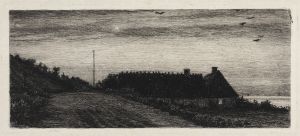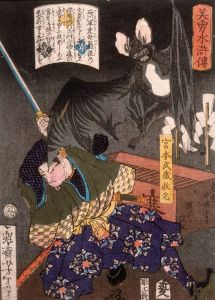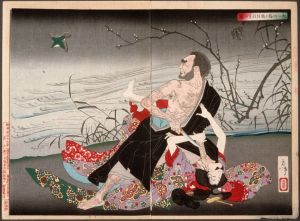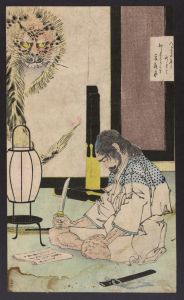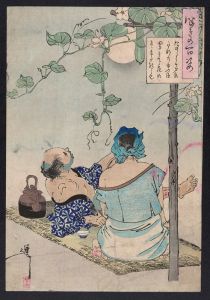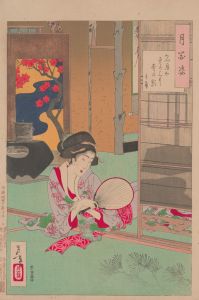
Sumiyoshi no meigetsu
A hand-painted replica of Tsukioka Yoshitoshi’s masterpiece Sumiyoshi no meigetsu, meticulously crafted by professional artists to capture the true essence of the original. Each piece is created with museum-quality canvas and rare mineral pigments, carefully painted by experienced artists with delicate brushstrokes and rich, layered colors to perfectly recreate the texture of the original artwork. Unlike machine-printed reproductions, this hand-painted version brings the painting to life, infused with the artist’s emotions and skill in every stroke. Whether for personal collection or home decoration, it instantly elevates the artistic atmosphere of any space.
"Sumiyoshi no Meigetsu" (translated as "The Harvest Moon at Sumiyoshi") is a woodblock print created by the renowned Japanese artist Tsukioka Yoshitoshi (1839–1892). This work is part of Yoshitoshi's celebrated series Tsuki hyakushi (One Hundred Aspects of the Moon), which was published between 1885 and 1892. The series is widely regarded as one of Yoshitoshi's masterpieces and a significant contribution to the ukiyo-e tradition during the late Edo and early Meiji periods.
The print depicts a serene and poetic scene inspired by Japanese literature, history, or folklore, which was a hallmark of the Tsuki hyakushi series. In "Sumiyoshi no Meigetsu," Yoshitoshi illustrates a moment associated with the Sumiyoshi Grand Shrine, a Shinto shrine located in Osaka, Japan, that is dedicated to the Sumiyoshi kami (deities of the sea and sailing). The shrine has long been a source of inspiration for Japanese poets and artists, and it is closely tied to the classical waka poetry tradition.
Yoshitoshi's work often combines historical and literary themes with a strong emphasis on mood and atmosphere. In this print, the artist captures the beauty of the harvest moon, a recurring motif in Japanese art and culture symbolizing autumn, renewal, and poetic reflection. The composition is characterized by Yoshitoshi's masterful use of color, line, and shading, which evoke a sense of tranquility and reverence for nature.
As with other prints in the Tsuki hyakushi series, "Sumiyoshi no Meigetsu" reflects Yoshitoshi's ability to blend traditional ukiyo-e techniques with innovative approaches that were influenced by the changing artistic landscape of the Meiji era. His work during this period demonstrates a deep respect for Japan's cultural heritage while also addressing the challenges of modernization and the decline of the ukiyo-e tradition.
"Sumiyoshi no Meigetsu" is a testament to Yoshitoshi's skill as an artist and his dedication to preserving the beauty and depth of Japanese art and storytelling. The print remains an important example of late ukiyo-e and continues to be appreciated by art historians and collectors worldwide.





